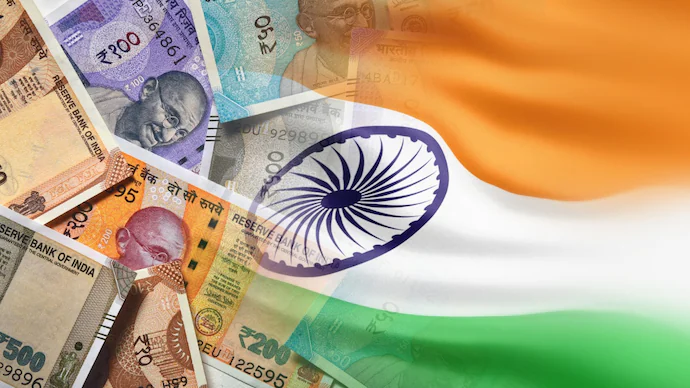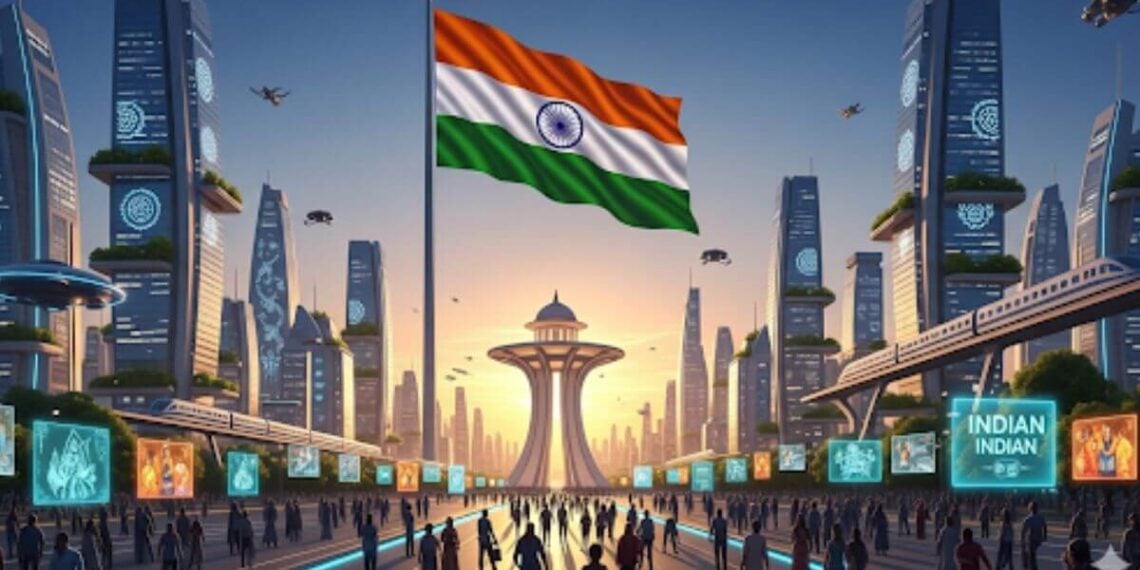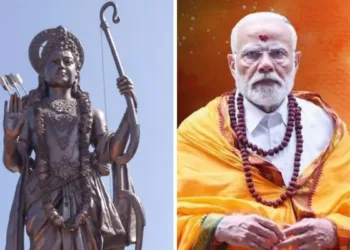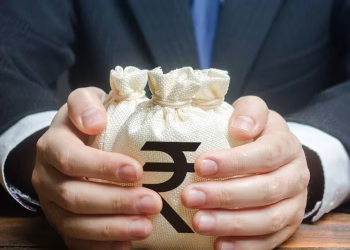India‘s economy just delivered a powerful statement. The GDP grew at 8.2% in the July-September 2025 quarter—the highest economic growth in six quarters—surpassing economist expectations and cementing India’s position as the world’s fastest-growing major economy. This remarkable performance comes even as the nation navigates 50% U.S. tariffs and global economic headwinds, demonstrating the resilience of India’s domestic-driven growth model.
Table of Contents
Record-Breaking Performance: Key Numbers
Released by the National Statistics Office (NSO) on November 28, 2025, the data reveals robust economic momentum across multiple sectors:
GDP Growth Comparison
| Period | Real GDP Growth | Comparison |
|---|---|---|
| Q2 FY26 (Jul-Sep 2025) | 8.2% | Six-quarter high |
| Q1 FY26 (Apr-Jun 2025) | 7.8% | Strong acceleration |
| Q2 FY25 (Jul-Sep 2024) | 5.6% | YoY improvement |
| H1 FY26 (Apr-Sep 2025) | 8.0% | vs. 6.1% in H1 FY25 |
| Nominal GDP Q2 | 8.7% | ₹85.25 lakh crore |
The growth exceeded market expectations, with analysts having pegged the July-September GDP at 7.3%. In absolute terms, real GDP for Q2 is estimated at ₹48.63 lakh crore, compared with ₹44.94 lakh crore a year earlier.
For India’s economic growth analysis, explore our financial market insights.

What Drove the 8.2% Surge?
The acceleration was powered by broad-based growth across key sectors, defying global slowdown trends:
Sectoral Performance Breakdown
Secondary Sector (Industry): 8.1% Growth
- Manufacturing surged 9.1% (compared to just 2.2% in Q2 FY25)
- Construction expanded 7.2%
- Factory output increased ahead of festival season demand
Tertiary Sector (Services): 9.2% Growth
- Financial and real estate professional services sustained substantial growth at 10.2%
- Services sector maintained double-digit momentum
- Digital economy and professional services thriving
Private Consumption: 7.9% Growth Real Private Final Consumption Expenditure (PFCE) grew 7.9% in Q2, up from 6.4% in the corresponding quarter last year, driven by festival season spending and anticipated GST rate cuts.
Gross Fixed Capital Formation: 7.3% Growth Investment activity expanded 7.3% at constant prices against 6.7% in Q2 FY25, indicating sustained infrastructure development.
For sector-specific investment opportunities, check our market analysis guides.
GST Rate Cuts: The Catalyst Effect
A significant growth driver was increased factory production in anticipation of a consumption boost from the GST rate cut announced by Prime Minister Modi in his Independence Day address. Manufacturers ramped up output ahead of the festival season, creating a positive multiplier effect across the economy.
This strategic policy intervention demonstrates how targeted reforms can stimulate both supply-side (manufacturing) and demand-side (consumption) growth simultaneously.
Defying US Tariff Headwinds
The 8.2% growth is particularly impressive given the quarter was partially affected by 50% U.S. tariffs. However, exports grew by 11% in Q2, showcasing India’s ability to maintain trade momentum despite protectionist barriers.
Analysts expect the tariff impact to become starker in October-November, but economists believe the GST-driven consumption push can negate and potentially exceed this headwind.
World’s Fastest-Growing Major Economy
During the July-September quarter, the Chinese economy grew by 4.8%, confirming India’s position as the fastest-growing major economy globally. This leadership extends India’s streak, building on impressive historical performance:
- FY 2023-24: 9.2% growth
- FY 2022-23: 7.2% growth
- FY 2021-22: 8.7% growth
- FY 2024-25: 6.5% growth
For comparative economic analysis, visit our global market trends.
FY26 Projections: 7%+ Growth Expected
Most analysts expect the economy to grow by 7.2% to 7.6% in FY26, with some economists predicting even higher figures given the strong H1 performance. With an 8% growth rate in the first half, India may exceed the annual growth target of 6.3-6.8% projected in the Economic Survey.
Key Factors Supporting FY26 Growth:
- Festival season momentum continuing into Q3
- GST 2.0 reforms driving consumption
- Sustained public infrastructure spending
- Stable inflation environment
- RBI monetary policy support (expected rate cuts)
Monetary Policy Implications
Most analysts expect a 25 basis point rate cut by the Monetary Policy Committee next week, with predictions of 25 to 50 basis points in monetary easing for the rest of FY26 to support nominal GDP growth and sustain economic momentum.
The strong GDP performance provides the Reserve Bank of India flexibility to balance growth support with inflation management.
Nominal GDP Challenge: Tax Revenue Implications
While real GDP surged, nominal GDP grew by 8.7% in Q2 and 8.8% in H1, below the Budget estimate of 10.1%. The slower nominal growth resulting from significant decline in inflation could complicate achievement of tax targets based on 10.1% nominal growth assumption.
However, government economists project nominal GDP will accelerate in Q3 and Q4 as base effects fade and inflation normalizes.
From ‘Fragile 5’ to 4th Largest Economy
India was placed 11th in 2013-14 and is now the fourth-largest economy. In 2013, India was in the ‘Fragile 5’ economies—a term coined by Morgan Stanley for emerging countries including India, Brazil, Indonesia, South Africa, and Turkey whose economies were struggling.
Today, India stands as a growth powerhouse, with the IMF projecting India will become a $5 trillion economy by fiscal year 2029.
Viksit Bharat 2047: On Track
To realize the vision of ‘Viksit Bharat’ (developed nation) by 2047, India needs to achieve a growth rate of around 8% at constant prices on average for about a decade or two. The current 8.2% performance demonstrates this ambitious target is achievable with consistent policy execution.
For long-term investment strategies, explore our wealth creation guides.
IMF Projections: Robust Despite Headwinds
The International Monetary Fund projects India’s real GDP to grow 6.6% in fiscal 2026 before moderating to 6.2% in fiscal 2027, assuming a prolonged delay in a U.S.-India trade deal. However, it noted that despite external headwinds, growth is expected to remain robust, supported by favorable domestic conditions.
The Bottom Line
India’s 8.2% GDP growth in Q2 FY26—the highest in six quarters—demonstrates the economy’s fundamental strength and resilience. Driven by manufacturing resurgence, services sector vitality, and robust private consumption, this performance exceeds expectations despite 50% U.S. tariffs. With H1 growth at 8.0%, full-year FY26 projections climbing to 7%+, and India maintaining its position as the world’s fastest-growing major economy, the nation remains firmly on track toward its Viksit Bharat 2047 vision. As strategic reforms like GST rate cuts generate consumption multipliers and infrastructure investments sustain momentum, India’s growth story continues accelerating even as global headwinds intensify.
Stay updated on India’s economic developments at TechnoSports.
Understanding economic trends for investment decisions? Explore our financial literacy guides and make informed wealth-building choices.







